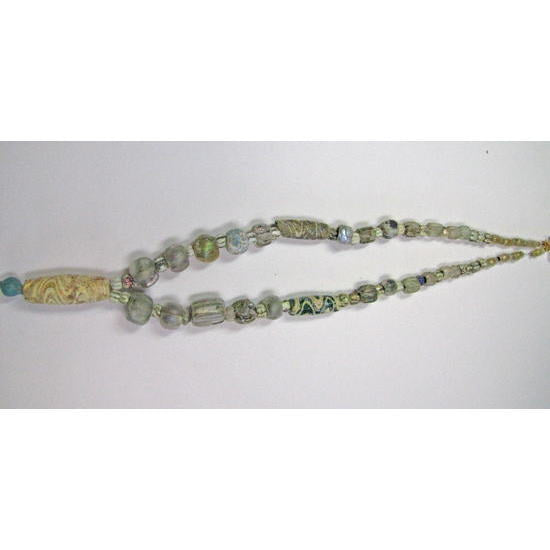MALAIKA
Ancient Roman Iridescent Glass
Ancient Roman Iridescent Glass
SKU:hn0609-303
Couldn't load pickup availability
Product Description: These Roman beads, dating from 100 BC to 300 AD, feature a unique iridescence resulting from centuries of burial. The natural weathering process imparts a shimmering silver and iridescent finish to the glass.
Specifications:
- Origin: Alexandria (modern-day Egypt)
-
Size:
- Length: 46cm
- Central Bead Size: 10mm x 33mm
Note: As an antique item, it may have scratches, cracks, or chips.
About Roman Beads:
Era: 100 BC to 300 AD
Origin: Alexandria (modern-day Egypt), coastal regions of Syria, and other areas
From the 1st century BC to the 4th century AD, glass craftsmanship flourished in the Roman Empire, leading to the production and export of many glass products as trade goods. These glass items, crafted along the Mediterranean coast, spread across vast regions from Northern Europe to Japan.
Initially, most glass products were opaque, but by the 1st century AD, transparent glass gained popularity and became widespread. Beads made for adornment were highly valued. However, fragments of glass cups and jugs with holes drilled for use as beads are more commonly found and can be acquired at relatively lower prices today due to their abundance.
Iridescence:
Iridescence is a phenomenon caused by the weathering of glass buried underground for long periods, resulting in a beautiful, shimmering silver or iridescent finish.
Share



